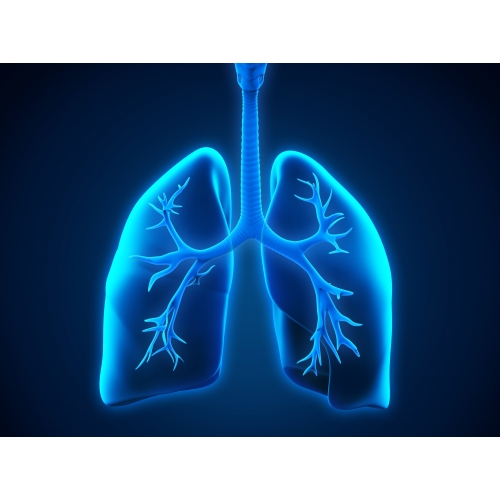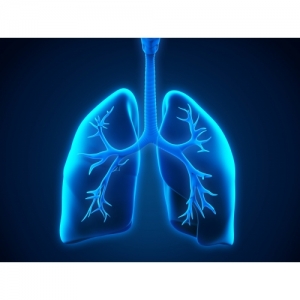
About PTS302- malignant airway obstruction (MAO)
%E5%9C%96%E7%89%87(2).png)
(tumor completely occluded the right main bronchus airway; picture source: from NSLCL-MAO Phase III China case report)
Lung cancer is the most common type of malignant tumors and reasons of cancer-related mortality. According to IARC statistics, there are 2.094 million new lung cancer cases and resulting in 1.762 million deaths in 2018. The incidence and death rate of lung cancer are 31.5/100,000 and 27.1/100,000 in males, respectively. In females, they are 14.6/100,000 and 11.2/100,000 respectively, both lower than in males.
Non-small cell lung cancer (NSCLC) accounts for about 85% of all lung cancer types, and is classified into central lung cancer (tumors rise from trachea, bronchi, or segmental bronchi) and peripheral lung cancer (tumors rise more to the periphery, such as alveoli).
MAO is airway obstruction due to oversized tumor from central lung cancer, of which squamous cell carcinoma is the dominant cell type. Central lung cancer can also be classified by the lesion location as: intrinsic (purely endoluminal tumor), mixed (tumor involves both endoluminal and extra-luminal regions) and extrinsic (purely extra-luminal tumor), and all of these types can lead to trachea/bronchus stenosis to various levels, which is often difficult to relieve. Mild MAO may be complicated with episodes of obstructive pneumonia, dyspnea, hemoptysis, and atelectasis (lung collapse). Severe MAO may lead to serious respiratory failure and suffocation.
The current MAO management often involves surgery and interventional bronchoscopy. The routine interventional options include brachytherapy, cryotherapy, photodynamic therapy, electrocautery, balloon dilatation, and airway stent placing. Although many options are available, each option provides various effectiveness, and has its own advantages and disadvantages. So far there is no effective medicine for interventional options to relieve MAO.


